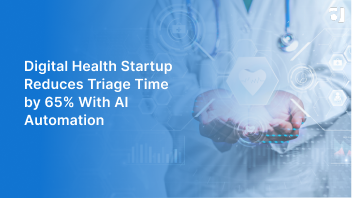Modern systems aren’t a luxury they’re the backbone of tomorrow’s healthcare
Transforming legacy healthcare systems into secure, scalable, and future-ready platforms through the modernization journey
In an era of rapid technological advancement, the healthcare industry stands at a critical juncture. Legacy systems, while once foundational, are now the primary bottleneck to innovation, scalability, and security. They present a common set of challenges: outdated user interfaces, costly maintenance, and complex, undocumented codebases.
Maintaining just 10 federal systems costs $337M annually, but the bigger cost is weak security, poor scalability, and risks to patient care.
With healthcare IT projected to reach $728B by 2029, modernizing legacy systems isn’t optional—it’s critical for secure, reliable, and future-ready care.
This blog post explores how the project successfully tackled these challenges, providing a blueprint for modernizing legacy systems in healthcare from a developer’s perspective.

The Challenge: Navigating a Legacy Labyrinth
The Solution: A Modern Tech Stack
Backend Transformation


The monolithic Oracle procedures were refactored into modular Java services using the Spring Boot framework. This move to a service-based architecture allowed for improved performance, easier maintenance, and greater scalability.
Migrating Oracle Logic to Spring Boot Services: The Backend Gauntlet
Transforming the backend was the toughest, but also the most crucial, step in the modernization.We had to convert hundreds of Oracle PL/SQL stored procedures into modular Java services. This was far from a simple “lift-and-shift” operation.
Our team faced several developer-specific hurdles:
- The Global Variables: Many Oracle procedures relied on globally declared variables whose values were retrieved and changed from anywhere within the forms. Each dependency had to be thoroughly verified and mapped to ensure proper translation into Java.
- Unearthing Hidden Logic: The procedures’ core functionality wasn’t always immediately obvious. We had to analyze not only the main logic but also “pre” and “post” queries to fully understand and replicate the correct behavior in Java.
- Untangling the Monolith: Large, complex Oracle procedures with multiple nested sub-procedure calls that altered variable values presented a major difficulty. We had to meticulously break down these monolithic blocks, understand the intricate flow, and convert them into clean, modular Java methods.
- Replicating Built-in Functions: The Oracle Forms used built-in functions for enabling or disabling fields based on global variables. We had to ensure our new Java logic replicated this precise, configuration-oriented functionality.
- Dealing with the “Out of Scope”: We also encountered outdated or unused procedures and functionalities that were no longer relevant to the project scope. Our process included identifying and documenting these to ensure the new system was lean and focused.
Frontend Modernization
Robust Authentication & Authorization with Keycloak
The project implemented a secure authentication and authorization layer using Keycloak, a robust Identity and Access Management solution. A permanent super admin account was created to manage realms and clients, while end-users were provisioned programmatically through a backend service.
This process involved a strategic authentication flow: user credentials were first validated against the Oracle database, and if valid, the user was registered in Keycloak with automatically assigned roles and attributes based on database mappings. The passwords were also synchronized between Keycloak and the Oracle database to ensure consistency. This approach provided a secure, centralized, and streamlined solution for user management.
Seamless Integration
Observability
For monitoring and insights, the project integrated an observability stack consisting of ELK (Elasticsearch, Logstash, Kibana), Prometheus, and Grafana. Throughout this process, continuous testing was performed to ensure feature parity and minimize any risks associated with the migration.
The Impact: Tangible Success
The project showed impactful outcomes, highlighting how effective a thoughtfully planned modernization approach can be.
- Enhanced Efficiency: The updated platform introduced a scalable, maintainable, and contemporary EM solution.
- Reduced Costs: Maintenance costs were significantly reduced, and performance was optimized by eliminating redundant logic.
- Enhanced User Experience: The intuitive and responsive UI greatly improved user satisfaction.
- Future-Proof Architecture: The project delivered a future-ready architecture that enables greater agility and innovation for future development.
Key Takeaway
By successfully converting legacy Oracle procedures to modern Java logic and integrating a robust authentication system with Keycloak , without disrupting the regular business, the project serves as a powerful testament to how strategic application modernization can transform a healthcare system, ensuring it is secure, efficient, and ready for the future.



